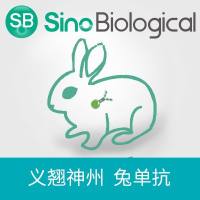A Yeast Recombination-Based Cloning System to Produce Chimeric HIV-1 Viruses and Express HIV-1 Genes
互联网
互联网
相关产品推荐

Recombinant-Mycoplasma-pneumoniae-Oligopeptide-transport-system-permease-protein-oppCoppCOligopeptide transport system permease protein oppC
¥12124

Recombinant-Arabidopsis-thaliana-Protein-CPR-5CPR5Protein CPR-5 Alternative name(s): Protein constitutive expression of pathogenesis-related genes 5; Protein constitutive expression of PR genes 5 Protein hypersenescence-1
¥13790

Beta-Tubulin 单克隆抗体 | Beta-Tubulin Loading Control Antibody, Chimeric Rabbit MAb
¥400

Norwalk Viruses G4(NV-4)诺如病毒G4型RT-PCR试剂盒说明书
询价

SIRPA/SIRPA蛋白Recombinant Human Tyrosine-protein phosphatase non-receptor type substrate 1 (SIRPA)重组蛋白Brain Ig-like molecule with tyrosine-based activation motifs蛋白
¥1344
相关问答

